Days remaining until the Randoli perahara on January 10, 2026
The Kelaniya Duruthu perahara Commemorates Lord Buddha’s first visit to the island. This magnificent procession, revived in 1927, has become one of Sri Lanka's most important Buddhist festivals.
Held annually at the Kelaniya Raja Maha Vihara on the Duruthu Full Moon Poya Day, the festival draws thousands of devotees and visitors from around the world, blending religious devotion with cultural artistry.
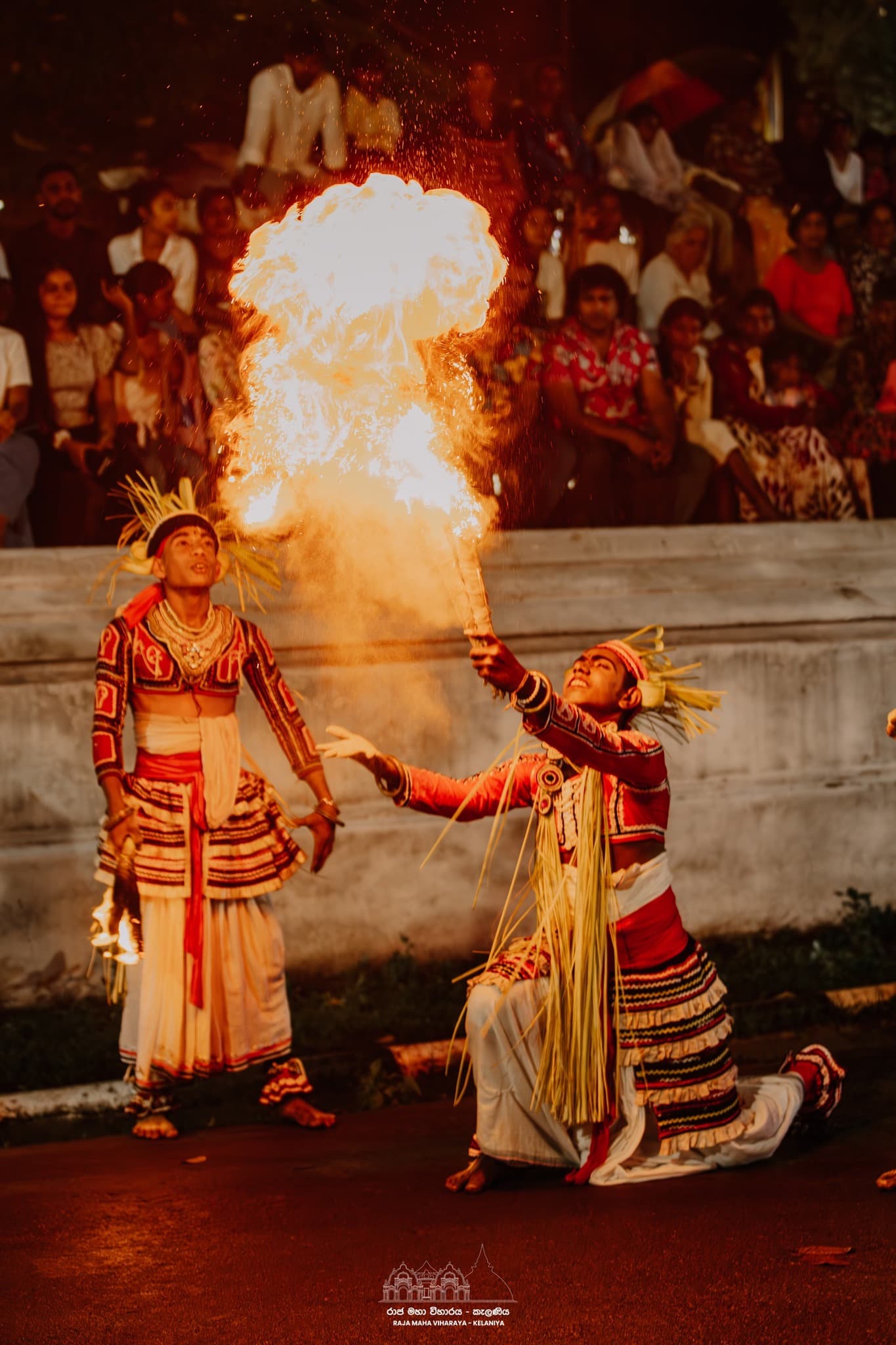
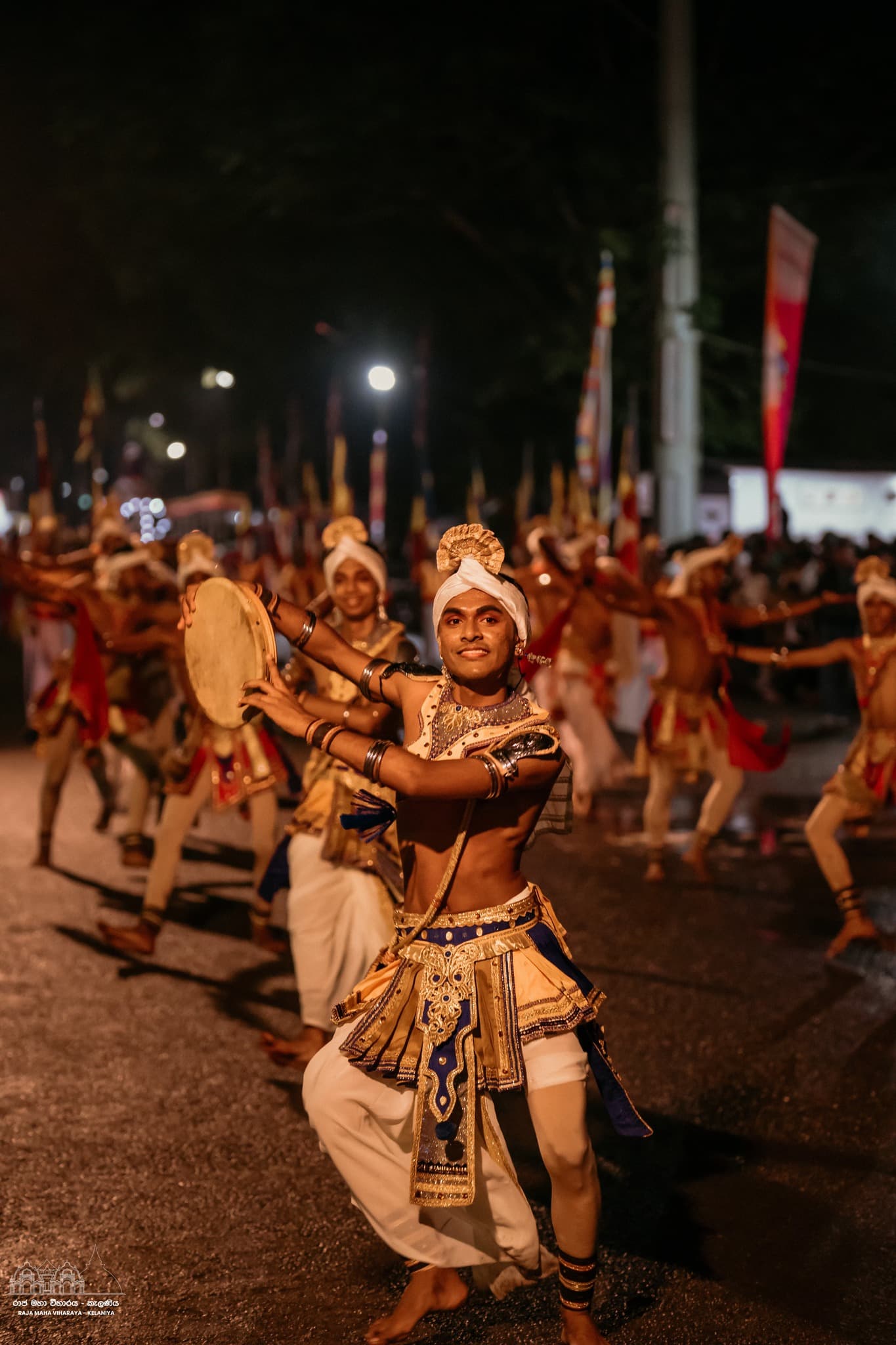
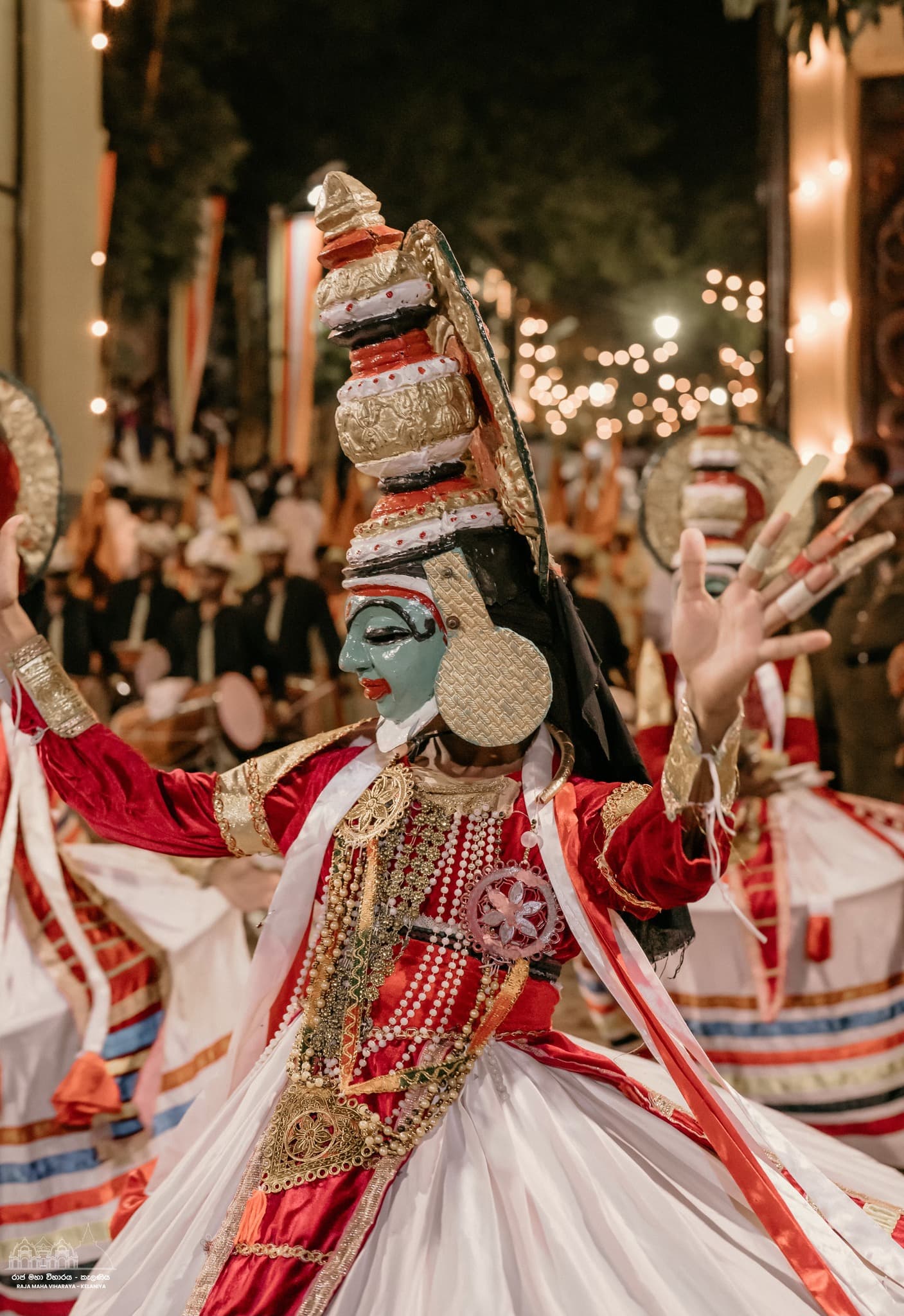
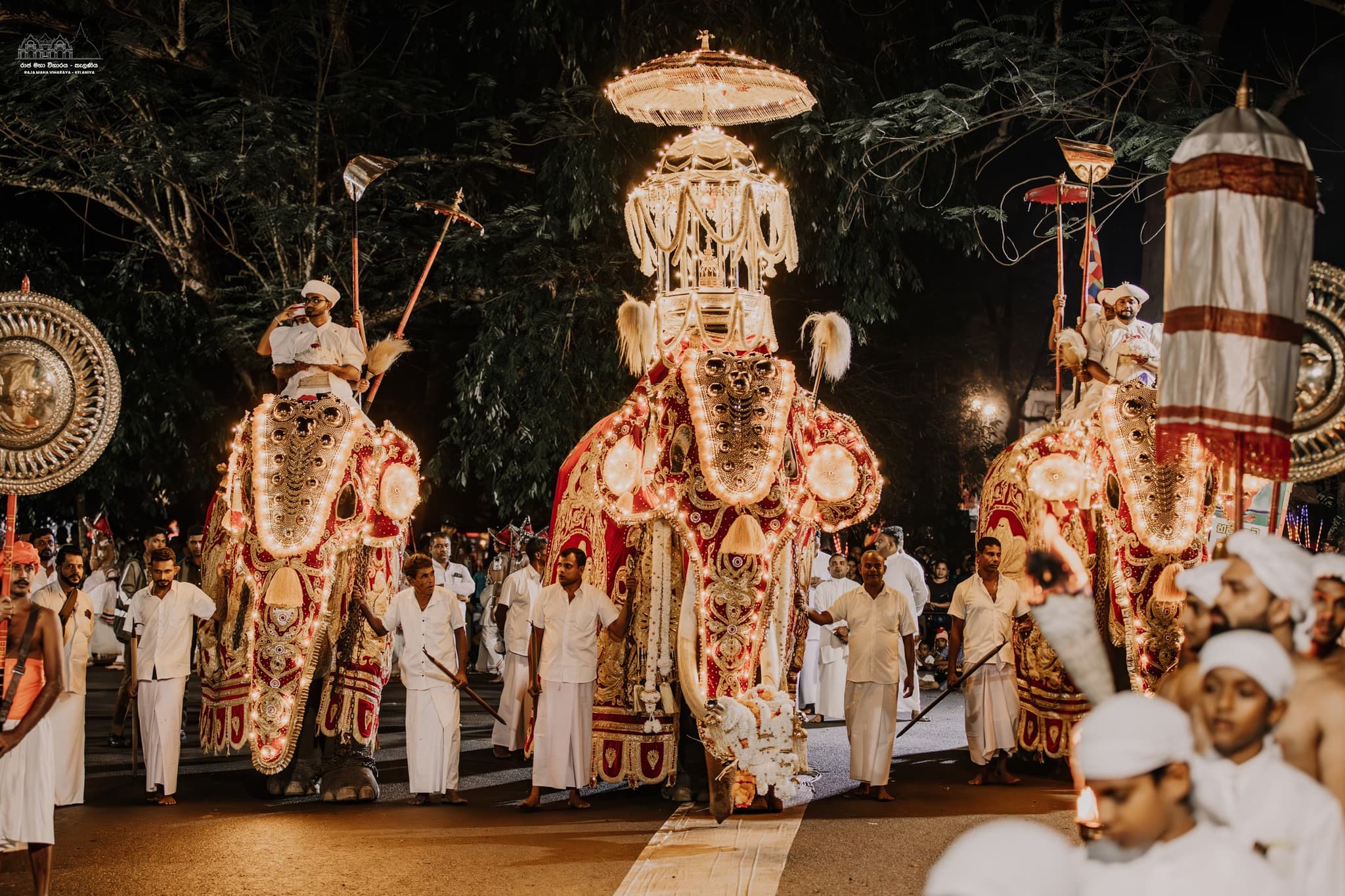
The Great Tusker of Kelaniya Temple
Kandula is a celebrated ceremonial tusker given to Kelaniya Raja Maha Viharaya by the King of Thailand when the elephant was just nine years old. Now fully grown at 31 years, Kandula has been under the sacred care and patronage of the temple's Nayaka Thero.
Kandula carries the sacred relic casket in major processions including the Kelaniya Duruthu perahara, Kataragama perahara, and the historic Dalada perahara. His dignified demeanor and prominent presence make him a living replica of legend, deeply loved by devotees.
The Duruthu perahara unfolds over three consecutive nights, each increasing in grandeur and spiritual significance
The first night marks a modest and sacred beginning within the upper terrace of the temple. This intimate procession sets the spiritual tone for the festival.
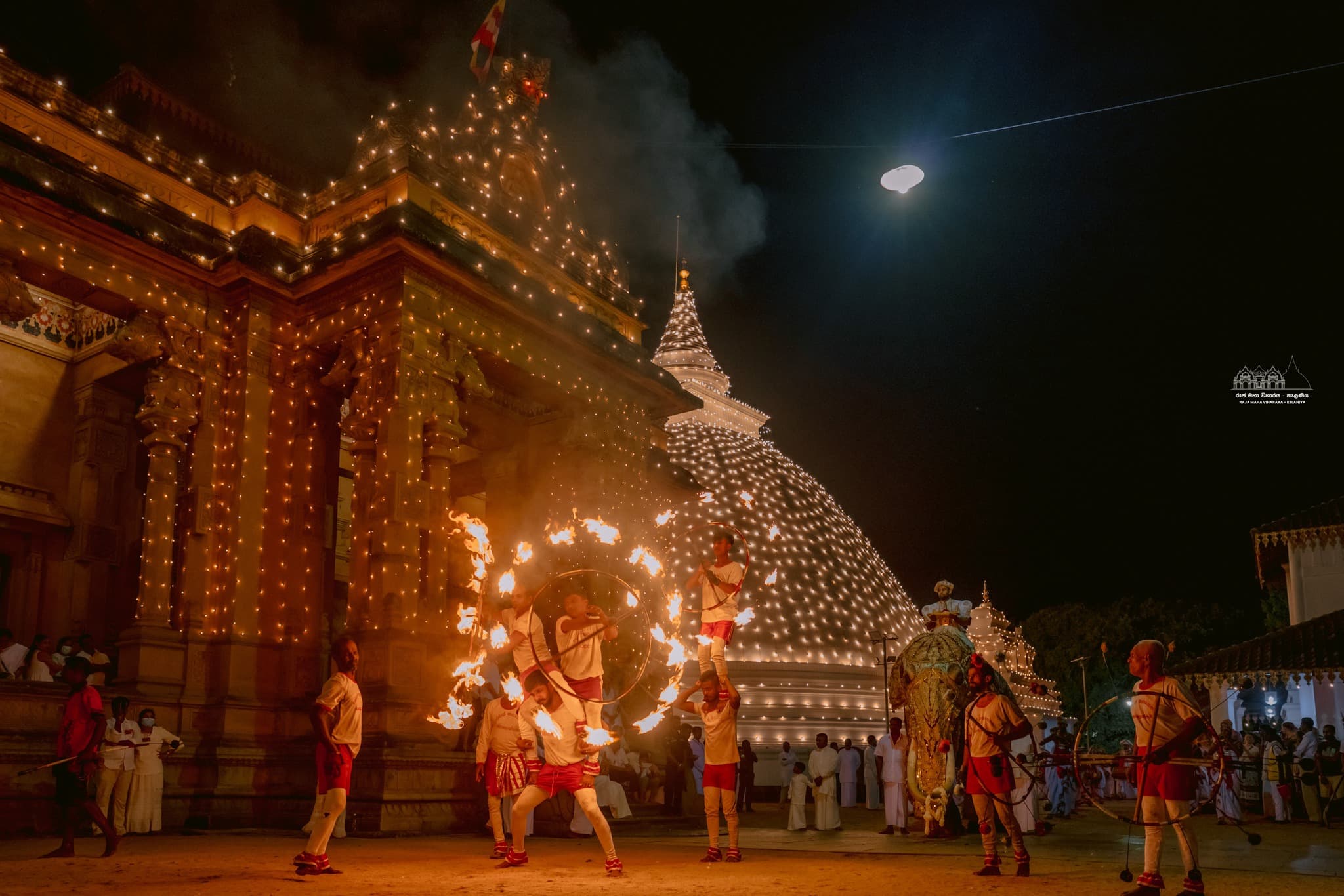
The perahara showcases the finest of Sri Lanka's traditional performance arts, preserving centuries-old cultural heritage
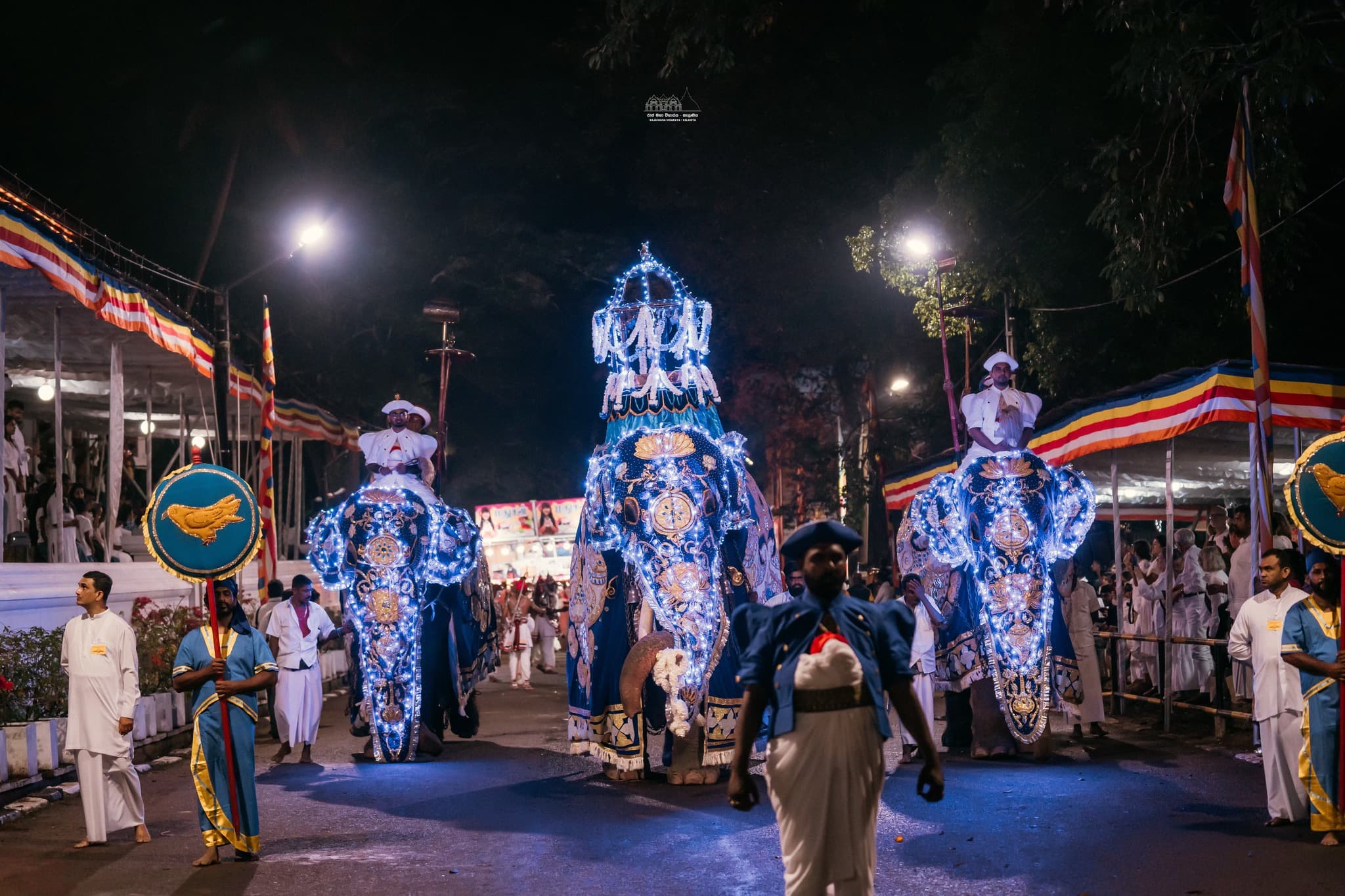
Majestic tuskers draped in colorful garments carrying sacred relics
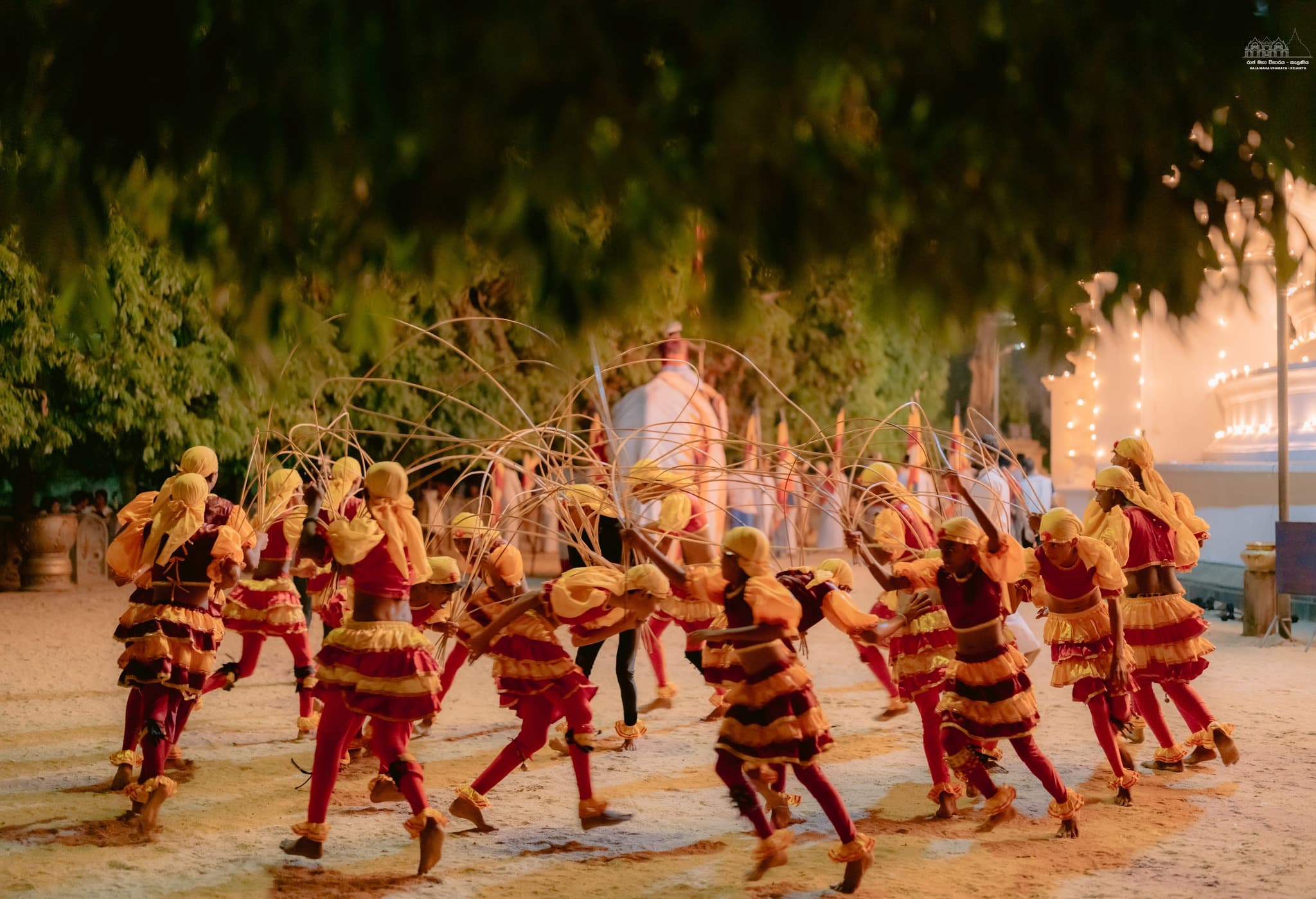
Traditional dancers in vibrant costumes performing ancient rituals
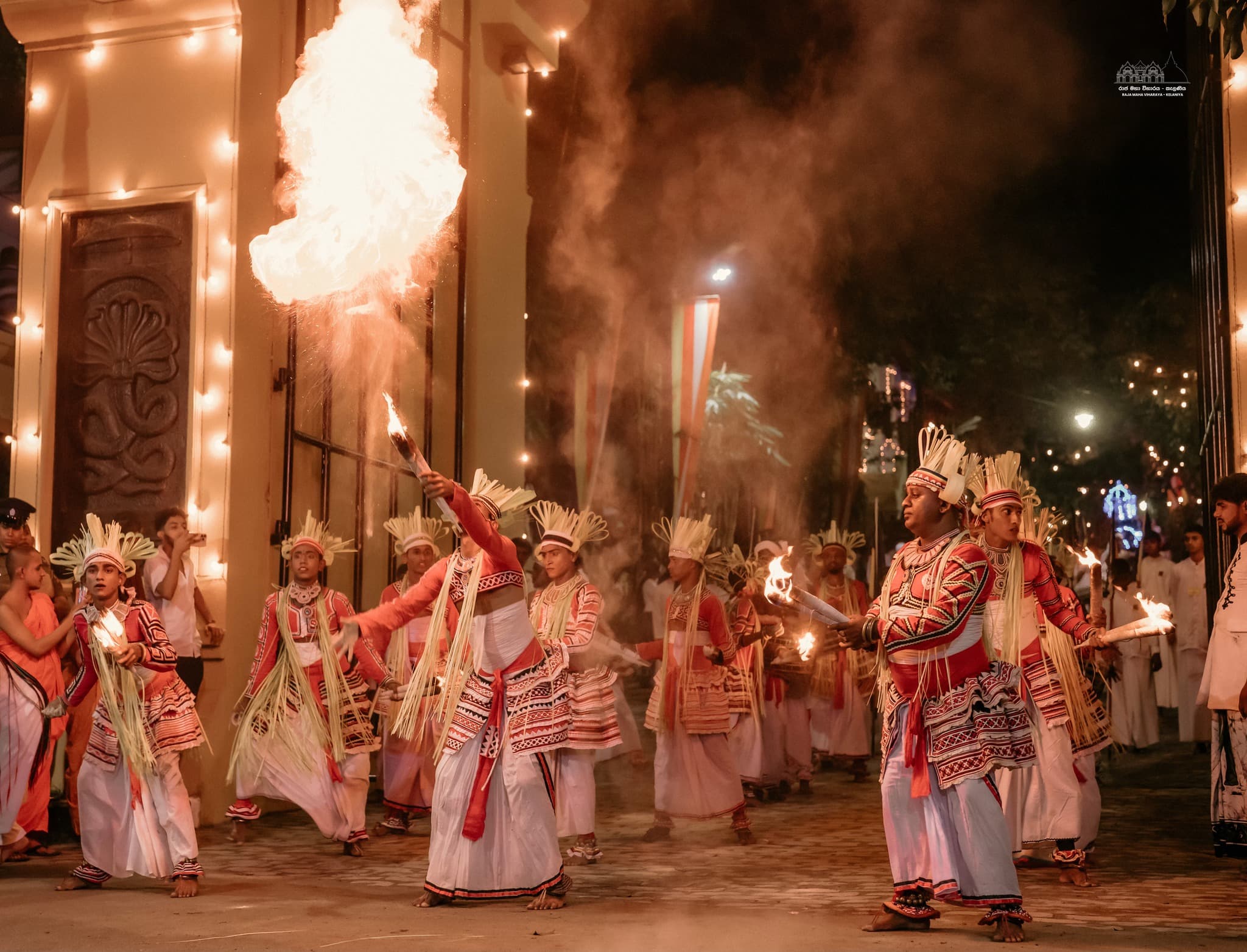
Skilled artists creating dazzling rings of flame in the night
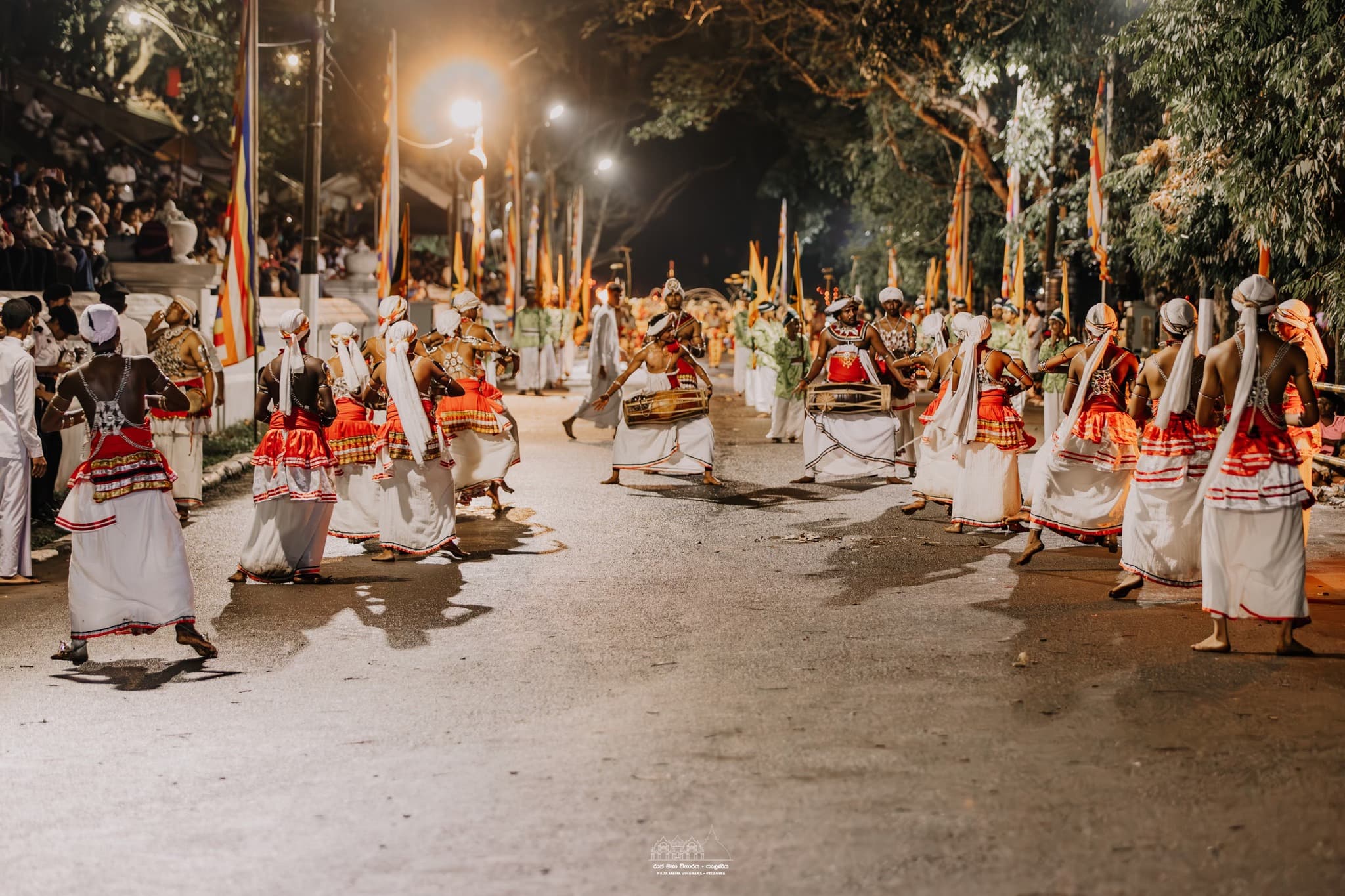
Rhythmic beats echoing through the streets in hypnotic patterns
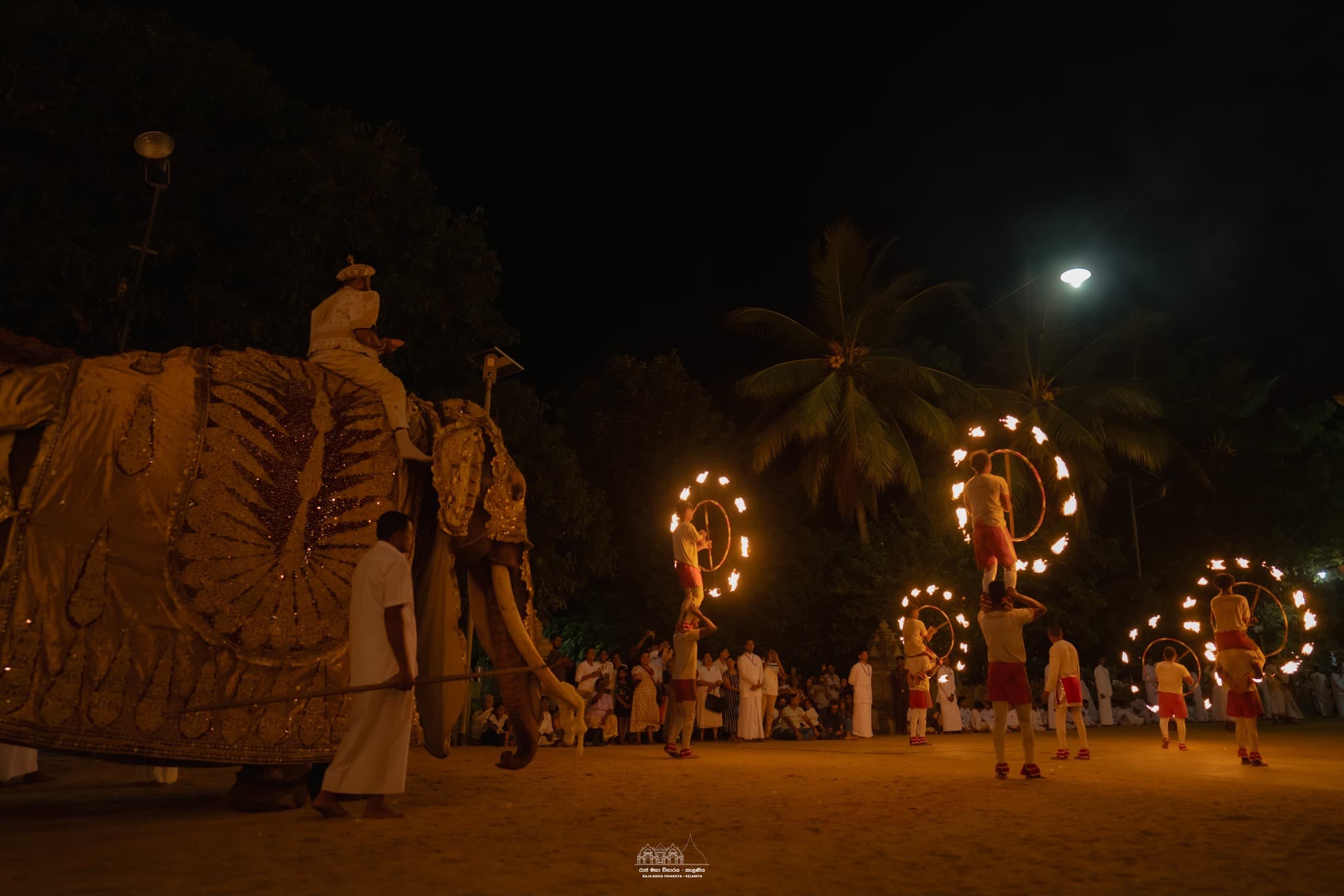
Sharp cracks echoing into the night sky, clearing the path
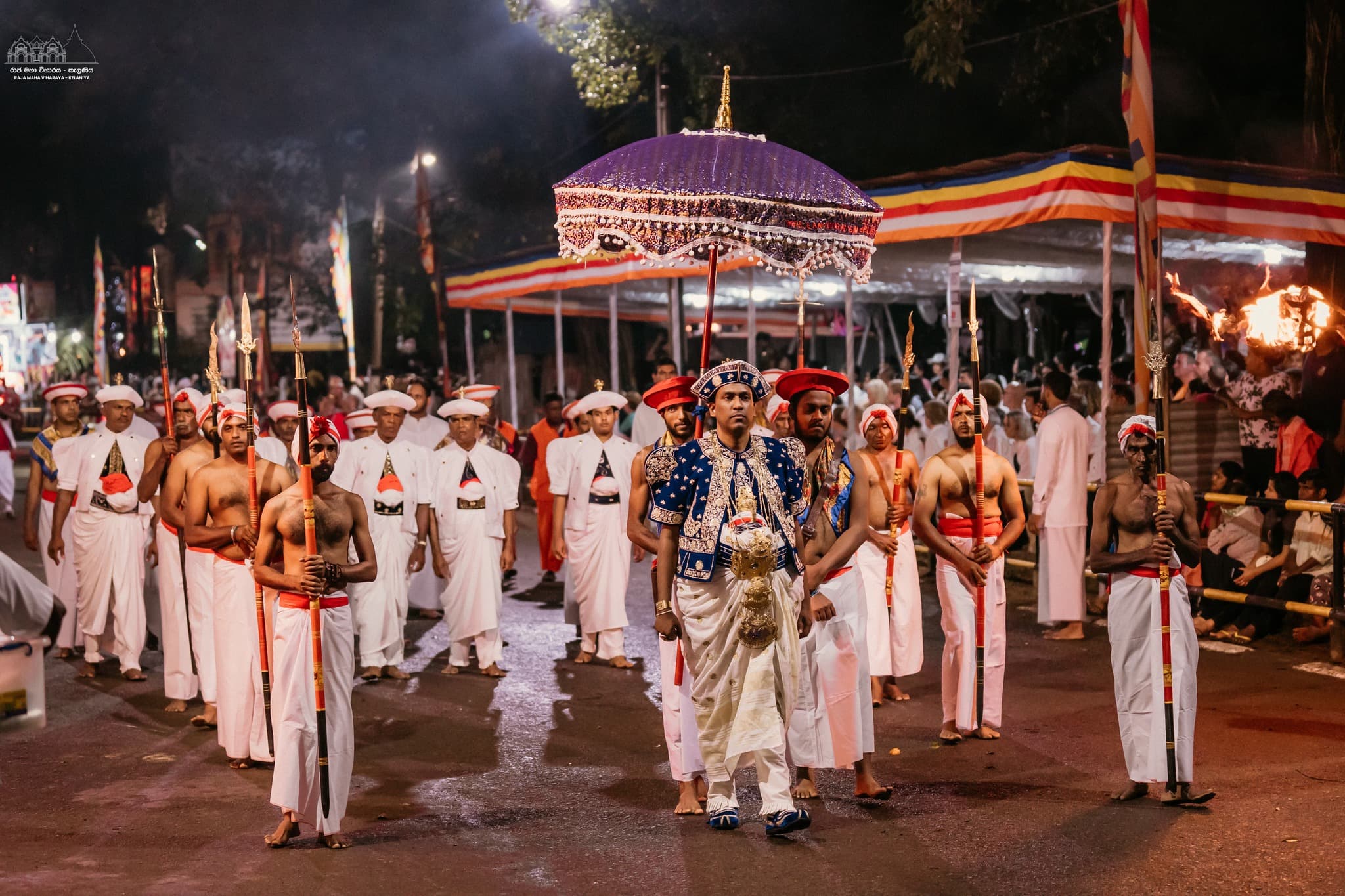
Honoring the righteous king from the Ramayana epic
A unique feature of the Kelaniya Duruthu perahara is the Vibhishana Devale perahara, dedicated to King Vibhishana, the noble brother of King Ravana from the epic Ramayana. According to tradition, Vibhishana was crowned as the rightful ruler of Lanka after standing for righteousness.
The people of Kelaniya venerate Vibhishana as a guardian deity who protects both the temple and the land. This procession adds a distinct cultural and historical dimension, symbolizing the connection between Sri Lanka's Buddhist traditions and the ancient heritage of the Ramayana.


The mahāvamsa records that cobras (nāgayā) were a human division who existed in the lands of Ceylon (modern Sri Lanka). Accordingly, the ancient Naga king of the Kelaniya region of the Naga tribe was known as Maniakkhika.
According to the historical records Maniakkhika, been the uncle of the two warring Naga chieftains namely Chulodara and Mahodara had visited Nagadeepa. There he took refuge in the triple gem (Buddha, Dhamma and Sangha), pleased with the wonderful words of the Buddha who visited Sri Lanka for the second time in the fifth year of his Buddhahood, in compassionate towards the Nāgas to settle their dispute. Moreover the Mahavamsa states that the Naga king Maniakkhika of Kelaniya had invited the Supreme Buddha to visit the part of the country where he held sway. Since that idea was not fulfilled, three years later king Maniakkhika Naga went back to Dambadiva and invited the Buddha to visit his abode, Kelaniya. Accordingly in the eighth year following his attainment of enlightenment, the Buddha accompanied by five hundred Arahant monks proceeded to king Maniakkhikas’ dwelling city of Kelaniya in the west of Sri Lanka on a Vesak full moon poya day. It was marked as the third visit of the Supreme Buddha to Sri Lanka.
Witness the splendor of the Kelaniya Duruthu perahara in comfort and style. Reserved seating ensures the best view of this sacred procession.
Experience the Kelaniya Duruthu Perahera 2026 with exceptional comfort and care
Elevated seating with clear views, live commentary, and photography without restrictions.
Clean washrooms, hassle-free entry/exit, and dedicated parking facilities.
Complimentary souvenir for every guest and a uniquely designed cultural setting.
Enhanced security and additional facilities arranged upon request.